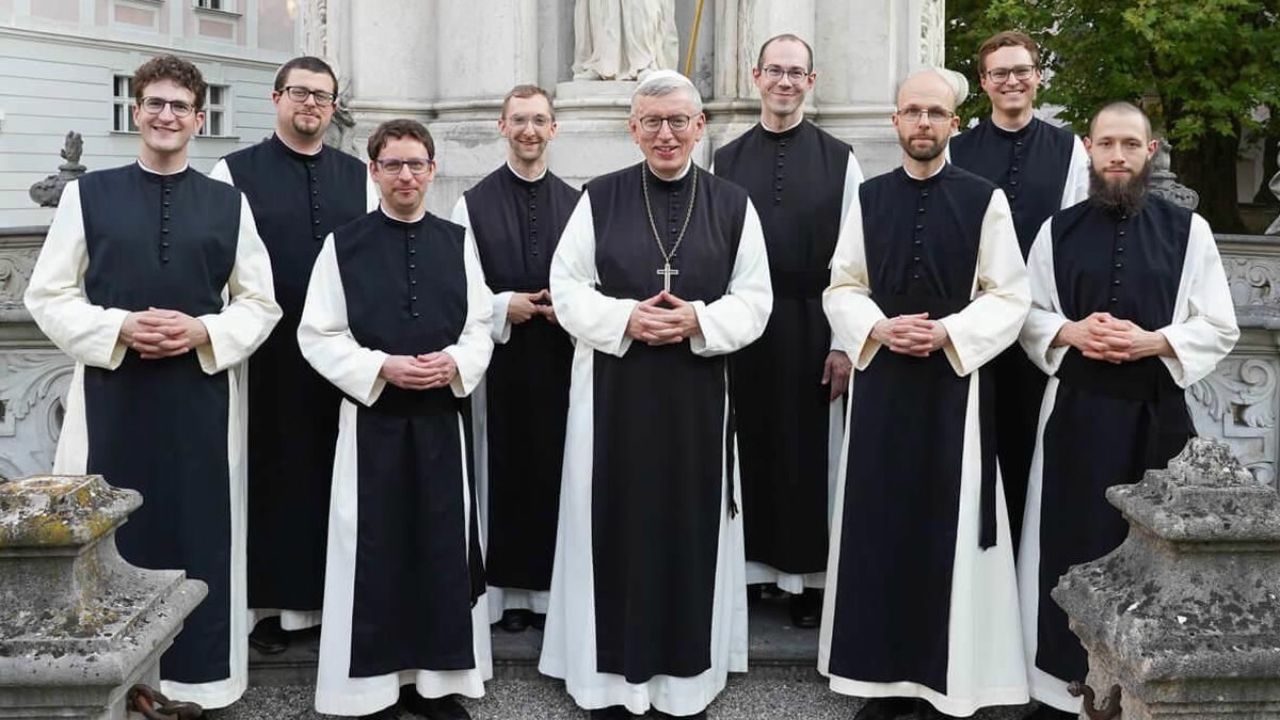To enter a Cistercian monastery means to embrace a form of life that, from its very beginning, sought to be a radical return to the Gospel, lived through the Regula Sancti Benedicti in its purity. The first founders of the “New Monastery” of Cîteaux in 1098 aimed at a new balance between liturgy, lectio divina, and manual labor, weaving contemplation and daily toil into a single harmony.
The Origins: a Return to Evangelical Simplicity
The Cistercians were born in a time of monastic reforms. Robert, Alberic, and Stephen Harding sought to strip away the excesses that had accumulated in monastic life: wealth, privileges, and unhealthy ties with political power. The “New Monastery” arose in a deserted and inhospitable land: forests, thorns, and wilderness. That barren setting became an image of their spiritual choice: to live apart from the world, poor with Christ the Poor, entrusting everything to Providence.
Their reform was not rupture but return to the origins. Following Benedict’s Rule, they wished to remain faithful to the charism of the Desert Fathers: austerity, silence, solitude, manual work, and a fraternity rooted in charity.
The Profile of the Monk: a Seeker of God
What does it mean, concretely, to be a Cistercian monk? Saint Bernard answered with a few decisive words: “Our Order is mortification, humility, voluntary poverty, obedience, peace, joy in the Holy Spirit.” The monk is a man who places himself under a Rule and an abbot, who lives by silence, fasting, vigil, and work – all directed toward one single goal: charity, the heart of Christian existence.
In a famous image, Bernard describes monks as the teeth of the Bride in the Song of Songs: uniform and pure, able to grind the food of the Word and share it with others. Aelred of Rievaulx portrays them as friends of the Lord, separated from the world not out of hatred for it, but to live a “second baptism” of continual conversion and interior joy. The monk is not primarily an isolated ascetic, but one who has chosen the narrow path of the Gospel, seeking God in hiddenness and fraternal communion.

The Fundamental Virtues: Humility, Obedience, Simplicity
Among the virtues shaping Cistercian life, humility stands out. For Bernard, it is worth more than fasting or corporal penance, because it is the one disposition that opens space for God. William of Saint-Thierry calls self-knowledge the first step of ascent to the Lord: only those who recognize their fragility can be transformed by grace.
Another central virtue is obedience. Baldwin of Ford described it as a source of freedom and communion: not blind submission, but a listening that frees from the ego and opens to fraternal love. Chastity is not sterile renunciation but the transformation of heart and flesh in the logic of evangelical transparency. The Cistercians also revalued simplicity: in clothing, in buildings, in liturgy. No ornaments, gold, or brocades: crosses of wood, candlesticks of iron, chalices of silver yet sober. This choice is not aesthetic but spiritual: what is simple gathers the spirit, while the superfluous scatters it.
Work and Sobriety
Unlike other medieval monastic currents, the Cistercians placed manual labor at the center. Far from being secondary, it became part of the very search for God. To cultivate the land, to build, to farm is not only sustenance but a school of humility, an exercise in poverty, a communion with Christ the Worker. William of Saint-Thierry also stressed sobrietyin food and sleep: not out of contempt for the body, but for inner vigilance. Sobriety guards the soul and opens it to contemplation.
A Spirituality Centered on Christ
At the center of Cistercian life there is not an idea, but a Person: Jesus Christ. Their spirituality is Christocentric, as Bernard reminded in a letter to Peter, cardinal deacon: everything begins and finds fulfillment in Christ, the one Mediator. William spoke of a “path of transfiguration”: man, transformed by the Spirit, passes from animal life to spiritual life, until reaching unitas spiritus with God. Aelred emphasized spiritual friendship, not mere human affection but a reflection of Trinitarian love. Thus monastic life becomes a school of contemplation: lectio divina, liturgical prayer, and silence interwoven to transform the heart and make it capable of God.

The Community: Unity in Charity
If one feature marks Cistercian tradition, it is the emphasis on common life. Solitude is not individualist isolation, but lived together with brothers. The Charta caritatis, foundational document of the Order, unites the autonomy of abbeys with fraternal communion through filiation and the General Chapter of abbots. Community life is woven with charity: “Charity unites and discipline guards” (Gilbert of Hoyland). Without rule, love scatters; without love, rule becomes oppression. Monastic life is played out within this tension between structure and freedom.
Being a Monk or Nun Today
The Cistercian experience does not belong to the Middle Ages alone. The 1969 Chapter reminded that it is “an experience of the living God,” meant to offer the world a foretaste of the eternal dwelling awaiting humanity. To be a Cistercian monk or nun today means, as then, to seek God in poverty, silence, and fraternal charity. It means to enter a school of inner freedom, of mutual responsibility, of pure love. It is a countercultural path, requiring abandonment of the logic of efficiency and power in order to embrace the logic of gratuity.
A Path for Our Time
Saint Bernard wrote to his monks: “Our Order is to remain under a rule, an abbot, a discipline; to practice silence, fasting, and above all to walk the way of charity.” Here lies the essence of Cistercian monasticism: a life simple, austere, and fraternal, wholly directed to Christ, wholly spent in love. To be a Cistercian monk or nun is not escape from the world, but a testimony for the world: that true freedom is born of humility, that true joy is found in self-giving, that the human heart is made for God.
p.L.T.
Silere non possum